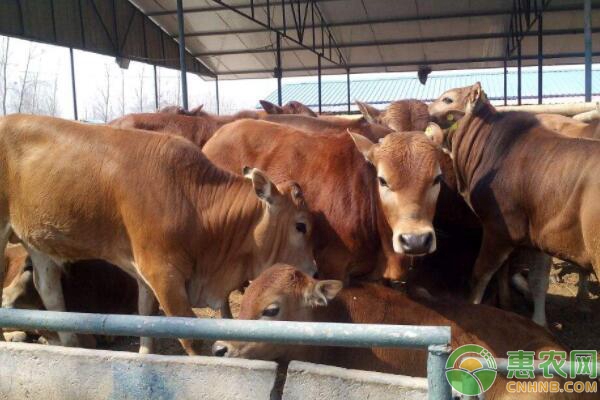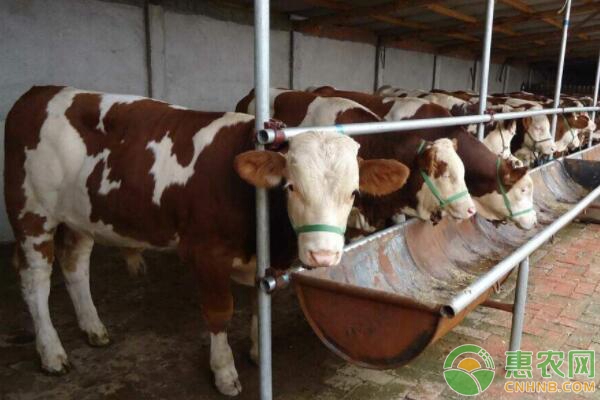Symptoms and prevention measures of beef cattle transport heat
Beef cattle transport heat is a stress syndrome caused by infection with a variety of pathogenic microorganisms. The main features are high fever and interstitial, lobar pneumonia. The main symptoms of sick cattle are high fever, purulent conjunctivitis, constant tearing, nasal flow, frequent coughing, difficulty breathing, and out of foamy mouth. It is common for fattening cattle to develop the disease and is one of the causes of death in the herd. Let's take a look at the following: the cause of the heat of beef cattle transportation and the clinical symptoms and prevention measures of beef cattle transportation heat.

1, the cause analysis
It is generally believed that due to improper management and stress, the pathogens invade the body and cause disease. Most of the pathogens are viruses, mainly including bovine infectious rhinotracheitis virus and type III parainfluenza virus; some of the pathogens are bacteria, mainly including Haemophilus mannii and Pasteurella multocida. Among them, Al-type hemolytic bacterium is mainly caused by non-immune yak. When the yak is healthy and there is no stress, there is a small amount of hemolytic bacteria in the respiratory tract. However, during transportation, the yak will cause an increase in the number of Al-type hemolytic bacteria contained in the nasal cavity and trachea, and gradually move to the lungs to cause bronchial pneumonia.
In addition, the 1-year-old yak will cause an increase in plasma fibrinogen during transportation, indicating that the body has been stimulated by stress. The yak is housed in a strange environment, while the cessation of drinking water and feed can also lead to an increase in fibrinogen levels. In addition, when a cow suddenly changes to a diet rich in cereal feed, it is also very likely to cause respiratory diseases.
2, clinical symptoms
The disease generally has an incubation period of 2-5 days. At the beginning of the disease, the sick cows showed signs of wilting, standing still or lying on the ground, loss of appetite, and a marked increase in body temperature, generally reaching 40-42 °C. The hair is fluffy and messy, the nose is dry, the body is weak, and it is obviously thin. As the symptoms worsen, there will be mucopurulent secretions flowing out of the nostrils, and dry secretions will cover the nose, and it will be able to expose the bleeding surface, tearing, eye purulent conjunctivitis, cough, and difficulty breathing. Some of the sick cows will expel mucous faeces, and some have neurological symptoms at the end of the disease, such as paroxysmal and tonic sputum.
3, necropsy changes and histopathological observation
The necropsy of the dead cows revealed that the whole lung was dark red, the texture was hard, like the liver, the cut surface was granular, and it was relatively dry. The interlobular interstitial of the cut surface was edematous, obviously widened, and gradually sinking into the water, the trachea There is foamy mucus in the cavity, swelling and congestion of the tracheal mucosa, swelling and bleeding in the mediastinal lymph nodes and bronchus, swelling of the liver, heart and kidney, and swelling, while the spleen is dark red, swelling also occurs, and the texture becomes soft. .
The diseased material was cut by conventional paraffin, and then stained with HE and observed under a microscope. It was found that there were shed epithelial cells, mucus and inflammatory exudate composed of a large number of red blood cells and neutrophils in the lung bronchial cavity. The large alveolar wall of the tissue is congested and thickened. Macrophages and lymphocytes infiltrate and proliferate, and the alveolar space becomes narrow. Most alveolar cavities contain a large amount of serum; spleen lymphoid tissue is hemorrhagic and necrotic, and the sinus sinus exudates. , and infiltrated with a large number of neutrophils; myocardial fiber particles are denatured; fatty degeneration occurs in a large area of ​​the liver, and vacuoles exist in the liver cells.

4, prevention measures
medical treatement
Diseased cattle should be immediately isolated, pay attention to observe and record clinical symptoms, such as body temperature, water intake, feed intake, pulse and respiratory conditions, while the entire herd should be strengthened and managed, and drink 0.3% sodium bicarbonate solution and light salt water.
For cattle that have already developed disease, 500 mL of normal saline and 500 mL of 4% sodium bicarbonate can be injected intravenously to replenish body fluids, adjust the body's acid-base balance for 2 days, or intramuscularly 30 mL of analgin (or 30 mL of aminopyrine). ), 5mL aminophylline for symptomatic treatment.
Diseased cattle can also be treated with antibacterial and anti-inflammatory drugs, such as intramuscular injection by weight o. 02gjkg sodium cefotaxime, or intravenous injection by weight o. 06gjkg 10% sodium sulfathiazole, 3 times a day for 3 consecutive days. If the symptoms of the diseased cow are severe, 1500-2000 mL of 5% dextrose saline can be intravenously administered, and 2 g of vitamin C injection and 30 mg of dexamethasone sodium phosphate injection are added once a day. In order to avoid acidosis, the sick cow can be intravenously injected with 250-500 mL of 5% sodium bicarbonate injection.
Taking the above treatments, most of the cows can be cured after about 5 days. When the symptoms are severe, it can be cured after 7-8 days.
It should be noted that the disease can often be caused not only by one pathogen, but also caused by a mixture of multiple pathogens. Therefore, a broad-spectrum antibacterial agent should be used in combination to enhance the therapeutic effect through synergy. If the conditions of the cattle farm permit, the drug sensitivity test can be carried out first, so that the sensitive drug can be selected and the treatment effect is better.
Transportation management
In the process of cattle transportation, it is necessary to strengthen the protection. The straw with a thickness of 4-7cm can be laid in the car in advance, and the parking observation should be paid during transportation. As long as there is a cow disease, or a joint dislocation or joint sprain due to sudden braking or uneven road surface, especially when lying in the ground, immediately use a steel pipe or a wooden stick to separate the lying cattle to prevent other cattle from trampling. However, it is forbidden to violently beat and scare cattle.
During transportation, the speed of the vehicle should be controlled within 60km/h. The turning should be slow and stable. Both sides of the transport vehicle should be covered with canvas to avoid direct flow of the direct air and the nose and nostrils, but also to maintain proper ventilation. For cattle from different sources and ages, keep them separately and control the density to prevent overcrowding.
Strengthen feeding management
After the cattle are unloaded, it is necessary to take a rest for about 2 hours, then supply warm water, pay attention to adding electrolysis and so on. After 5 hours, you can feed the high quality hay for free feeding, and it is forbidden to stock in 7 days. It is not allowed to feed silty silage, fresh grass, wine residue and feed which is easy to ferment. The amount of sand is increased, so that the body is saturated with 60%. On the day of entering the circle, the whole herd can be intramuscularly injected with 10 mL of Anrulong (cefoquine sulfate injection) per 200 kg of body weight, and the florfenicol injection for cattle and sheep is used once a day for 3-5 times. day.
Reolink WiFi cameras can be added to Reolink PoE NVRs if they are in the same LAN. Here we'll guide you to finish this process following the steps below.
Step 1: Connect the camera to your router via WiFi by configuring WiFi settings for the WiFi camera.
Step 2: Connect your PoE NVR to the LAN port of the router.
Step 3: Open the monitor of your NVR, then select Channel Settings > IP channel. Check Auto Add and click Scan. Then the WiFi camera will show up in the list. Assign a channel for it if necessary.
Reolink WiFi cameras can be added to Reolink PoE NVRs if they are in the same LAN. Here we'll guide you to finish this process following the steps below.Reolink WiFi cameras can be added to Reolink PoE NVRs if they are in the same LAN. Here we'll guide you to finish this process following the steps below.Reolink WiFi cameras can be added to Reolink PoE NVRs if they are in the same LAN. Here we'll guide you to finish this process following the steps below.Reolink WiFi cameras can be added to Reolink PoE NVRs if they are in the same LAN. Here we'll guide you to finish this process following the steps below.
Surveillance Camera System,wireless camera,Outdoor Ip Camera ,Wireless Security Ip Camera,Home Security Cctv Wifi Smart Camera,Surveillance Camera Set
Shenzhen Fuvision Electronics Co., Ltd. , https://www.outdoorsolarcameras.com
